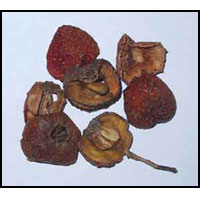By Charles Reuben
shawnee@unm.edu
 Numbers can be shocking, especially when they are intimately tied to our bodies.
Numbers can be shocking, especially when they are intimately tied to our bodies.
The most obvious shocking number is our age, most notably those that have a zero tacked on to its end. Neil Young once wrote, “You can’t be 20 on Sugar Mountain” and he was right. Unfortunately, there is no way to turn back the hands of time.
Another shocking number is our weight. At a certain time in lives, our metabolism begins to slow down and we begin to expand. A notable exception to this rule is my soul mate and supermodel, Jennifer, who constantly struggles to put on weight.
When our metabolisms slow down, our waistlines begin to increase (another scary number) and our weight goes up. At this point we find ourselves stepping onto bath scales from time to time with great trepidation.
The popular expression is “watching our weight” and if the numbers we see scare us enough, we might do something about it, like decreasing our food intake or getting some exercise.
I can handle the above-mentioned numbers but there was one number I saw a year and a half ago that really scared the hell out of me and made me think about my mortality: It was my cholesterol number and it was over 200, a number considered “borderline risk”
My first reaction upon seeing these numbers was panic. I immediately stopped eating my beloved gyros at the Olympia Café and didn’t touch the coconut shrimp or barbequed ribs at China Star. Instead I made a beeline for “Soupersalad” and ate there every single day. Boy, did that get old fast.
I also made a point of talking to my doctor who suggested I start taking “statin drugs” to lower my cholesterol numbers. I searched for information about them on the Internet and, once I read about their side effects, decided that they were not for me.
Instead I asked my acupuncturist what I should do about my high cholesterol and he suggested that I start drinking “shan zha” tea every morning. Known in the western world as “hawthorn fruit” or “Fructus Crataegus pinnatifida” in Latin, I first procured them at an outrageous, inflated price from my acupuncturist.
An herb shop in Albuquerque claimed to have shan zha in stock, but they turned out to be “hawthorn berries” and not “hawthorn fruit.”
“There is a big difference between berries and fruit,” I lectured those sassy herbalists. “A berry is small, about the size of a pea and a fruit is big, about the size of a cherry.”
The pushy lady herbalist surveyed me in contempt. How dare I question her authority? In the end I left without buying a thing, absolutely convinced in my heart and soul that a berry is not a fruit.
Lately I have been buying Hawthorn fruit for $4.95/lb. from my local Chinese supermarket, “Ta Lin’s.” The cashier, a friendly lady whose name is pronounced Kam-bye, special orders shan zha from Los Angeles after they have been imported all the way from China.
After rinsing the hawthorn fruit, I boil it vigorously for 10-15 minutes in a covered saucepan in about four cups of water. It is very important to boil the fruit because it might have little bug eggs in it and the high temperature will kill them. (Incidentally, I always store my hawthorn fruit in the freezer to discourage the eggs from hatching.)
Hatched lava will eventually cover the shan zha in a delicate, gossamer web that will probably scare the living daylights out of you: Better to avoid such trouble. (“They” say larva and eggs are harmless and high in protein but why ask for trouble? Just do what I say and boil the hell out of the stuff.)
What you have left after all that boiling is a potent tea that tastes very tart. You will also be left with a lot of soggy shan zha fruit and although I am told you can eat it, I throw it away. Jennifer says the resulting tea smells like urine but it does not bother me because I like its taste.
The upshot is that the shan zha tea seems to have remarkably affected my cholesterol level. So much so that I am back to eating barbequed ribs, coconut shrimp and gyros (slathered in an oh-so-delicious special sauce) with a clear conscience.
Below are listed the remarkable results of my drinking shan zha tea since February 2003. Please take this data with a grain of salt. I am not a doctor and am in no way qualified to draw any sort of conclusion from this data. For all I know, the quart of oatmeal I eat every morning may very well have contributed to my lower cholesterol numbers (but I don’t think that alone would have dropped them by 50!
| Date | Total Cholesterol | LDL (Bad) | HDL (Good) |
| Feb. 28, 2003 | 202 | 129 | 63 |
| June 7, 2003 | 186 | 124 | 53 |
| Aug. 20, 2004 | 149 | 94 | 46 |
Key to numbers:
Total Cholesterol: Less than 200 is desirable; 200-239 is borderline; 240 or greater is high
LDL (Bad Cholesterol): My doctor set my goal as <100
HDL (Good Cholesterol): <40 is an added risk.
(Why these numbers are going down instead of up is a mystery.)
So there you have it: One man’s exploration of a Chinese Herb (and, I guess, oatmeal) as a means to lower one’s cholesterol and still indulge in yummy, fatty foods.
Disclaimer: These numbers are for entertainment value only. I am in no way responsible for what happens to you if your start eating the way I eat and living your life the way I do.
Thank you for visiting Chucksville.

|
|


